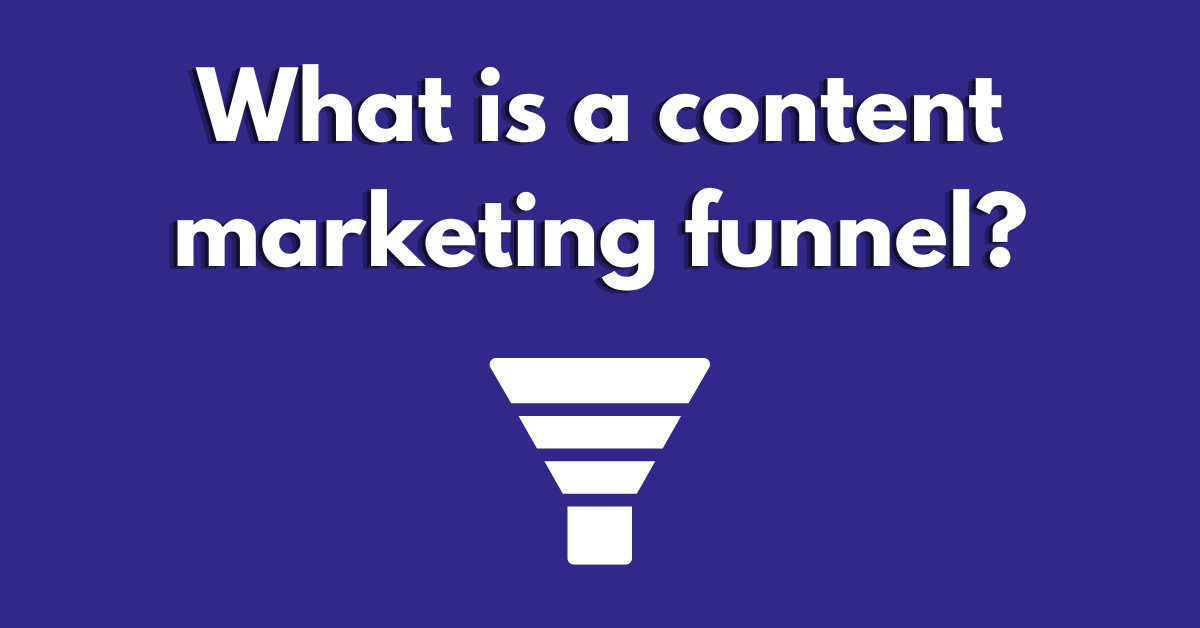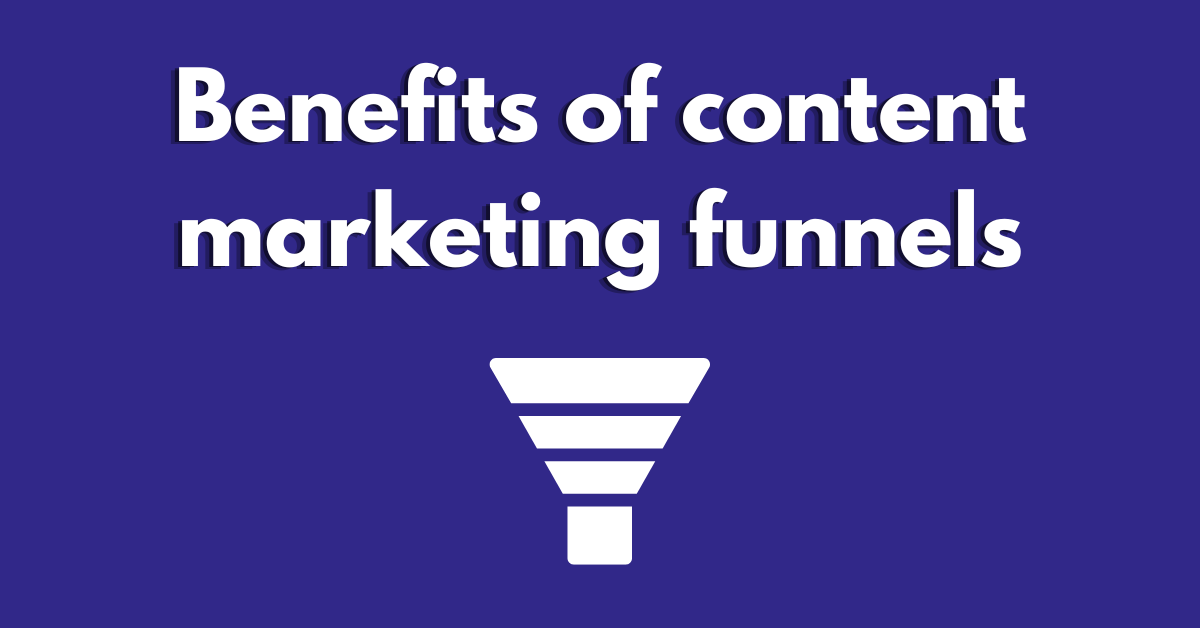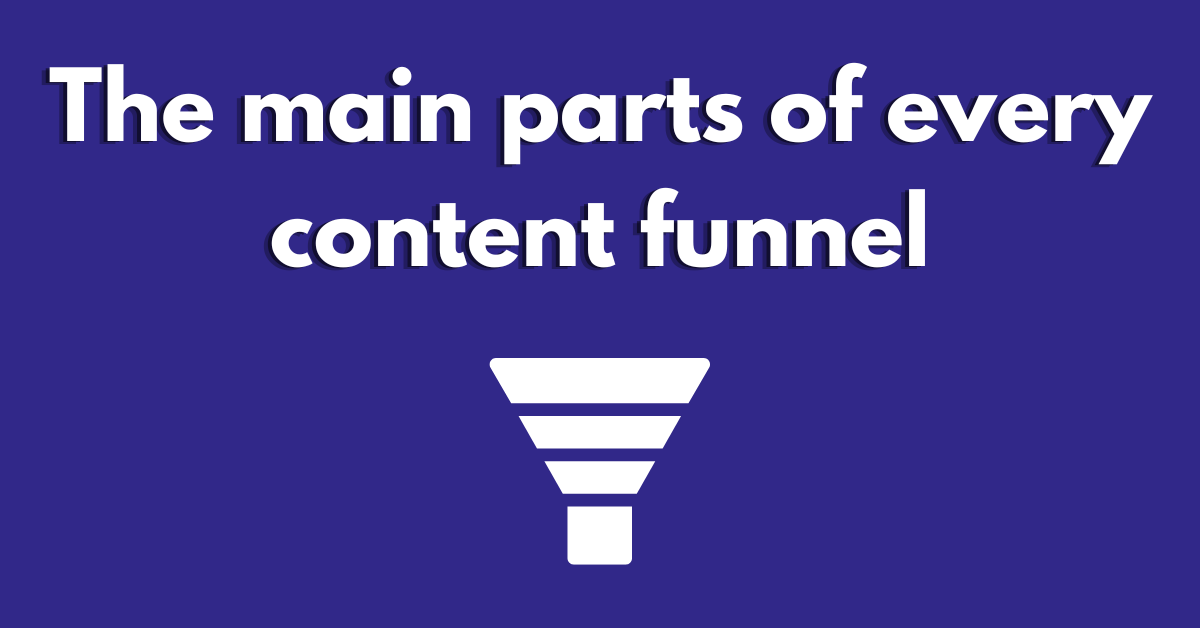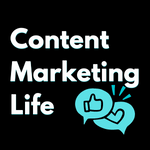Creating High-Converting Content Marketing Funnels in 2024
In the business world, there are funnels everywhere. I’m not talking about a literal, physical funnel. Instead, think of a content funnel as more of a path you want readers to take.
Creating a content funnel is like leveling up how you market your brand to potential customers.
At first, a content funnel might sound complicated. But we’ll walk you through every step of the process.
You’ll learn what a content marketing funnel is, why it’s beneficial, and how to create your own funnel.
Table of Contents
What’s a content marketing funnel?



A content marketing funnel is a large path potential customers take while learning about or interacting with your business.
In a company’s eyes, the ideal customer starts at the top of its funnel. Then, they continue through this funnel until reaching the final stage. At this point, (hopefully) a company’s content converts a reader into a customer.
While you might not think about it, you probably interact with random stages of a content marketing funnel without even knowing it.
The benefits of content marketing funnels



With a basic understanding of a content marketing funnel, it’s also helpful to learn why these are so beneficial. Here’s an in-depth look at the benefits of a content marketing funnel.
Learning where potential customers come from
Having potential customers visit your company’s website or social media posts is great. However, your wins can feel random if you don’t know where these people are coming from or why they became customers.
Fortunately, a content marketing funnel can help answer those previously mentioned questions. A funnel lets you track how many people are reading your content and what online sources they used to find your brand.
Understanding what drives a purchase decision
Many companies spend a lot of money and time determining what makes prospective customers decide to hit that Buy Now button.
With a content funnel, you can see what types of content trigger the most purchases. With this information, you can make sure your content marketing efforts continue including what turns readers into customers.
Helping you fine-tune your content marketing strategy
As you continue creating content, certain posts or videos will perform better than others. Sometimes, the content you throw together in 20 minutes becomes much more popular than a passion project you spend weeks on.
With a content marketing funnel, you get a clear view of what content moves people along the buyer’s journey. You also get a look at what content might be driving people away.
The three main parts of every content marketing funnel



With the basics out of the way, you can now learn how to create your very own marketing funnel.
Top-of-funnel content
The top of the content marketing funnel is typically where people learn about your company for the first time.
Being the first stage of the buyer’s journey, there are likely many ways a person might encounter your content. A few examples might include the following:
- A blog post
- Social media content
- A new email
- Watching one of your videos
Middle-of-funnel content
This part of the content marketing funnel is the consideration stage. At this point, the average person isn’t quite ready to make a purchase… yet.
Generally, it’s best to use the middle of the funnel for a lot of educational content. Give readers more in-depth content. At this point, they know the basics.
You might use the consideration phase to link potential customers to longer-form content. Or try to get a reader to attend an upcoming webinar or sign up for a free consultation or demo.
Bottom of the funnel content
At this part of the content marketing funnel, you’re so close to gaining paying customers!
Bottom of the funnel content continues the customer journey. However, it’s also pushing a little harder for a conversion.
One popular type of content for the bottom of the funnel is a product comparison.
At this point, your customer is likely narrowing down what company they’ll choose. And, as you can imagine, they’re probably comparing your business with a competitor or two.
You can also use this part of your content funnel to direct readers or viewers toward customer testimonials or reviews from business partners.
Main types of content and where they belong in your funnel



There are so many ways to create content. But where do the main types of content belong in your content strategy? Here are the answers.
A website or blog post
Blogging remains one of the tried and true parts of any content strategy. One recent study found that 91% of B2B marketers use blogging as part of their marketing strategies.
While being popular and effective, blogging is also a versatile way to form potential customer relationships.
If your company knows a bit about search engine optimization (SEO), it can reach many people by having its blog posts appear in organic search results.
You can also link people in the buyer’s journey to blog posts in the middle or bottom of your funnel with more in-depth content.
Best for: Not everyone might agree with me on this take, but I think blog posts are great for any stage of the funnel.
Create somewhat brief posts to reach people in the awareness stage. Informational content providing overviews of broader topics is great for the top of your funnel.
As people move down your funnel, you can create blog content in the form of fun quizzes or entice someone to become a customer with a promotional landing page offering discounts.
Bottom-of-the-funnel (BOFU) content for a blog or website can include testimonial pages and comparisons between your company and its competitors.
Infographics
Not all educational content has to be in the form of blog content. Take some of your blog’s most interesting facts and turn them into an infographic.
An infographic is where you give readers something relatively quick to check out. You’re not trying to make a hard sales pitch.
Best for: Top-of-funnel content
White papers
A white paper serves as short-form content that’s great for people in the consideration or purchase decision stages of a funnel.
Best for: Bottom or middle of the funnel
Paid Advertisements
If you want to create content that reaches people right now, paid ads can help you achieve this goal.
You can run paid advertisements everywhere from Google to Facebook. If you have a little room in your marketing budget, paid advertisements can provide an incredible return on investment (ROI) for your business.
Best for: Top of the funnel. You can also use retargeting for people at any stage of the funnel who stopped engaging with your brand.
Product or service comparisons
When someone’s reading product or service comparisons, that can be very good news for your business. Most likely, qualified leads looking at this type of content are about to make purchases.
Since people in this stage will likely be looking for in-depth information, this content belongs at the bottom of your company’s content funnel.
If you’re hesitant to create one of these comparison pages, don’t be. It might sound strange to even mention your competitors once, let alone include them in your company’s content.
However, comparison pages are types of long-form content that show your company is confident enough to fairly and objectively compare itself to its competition.
Best for: bottom-of-funnel content
Case studies
Do you want to highlight your company’s biggest wins to website visitors? Then, you need to create an incredibly beneficial case study.
A case study lets you tell an audience how your business helped a customer. While no two case studies are exactly the same, there are a few general sections every good case study needs.
Here’s a general guideline for a great case study:
- A quick background: This is where you quickly set up your business and a company or person you worked with.
- Challenges a customer faced: Use this section to highlight the pain points that led someone to come to your company for help.
- How your business solved their problems: This is where you detail how your business used its skills and experience to help a customer.
- Conclusion: Use this section to quickly wrap up the continued positive results your client had after working with your business.
Best for: middle of the funnel
Social media posts
You can also create a ton of relevant content by using social media. I’m sure you don’t need me to tell you what social media is.
Social media works incredibly well for generating leads and boosting conversion rates.
Best for: Top-of-funnel content
Marketing emails
Much like blog posts, emails are versatile and can work well during any stage of the funnel. The key to success with email is sending content strategically.
If you have people at the top of the funnel, send quick emails that introduce your brand.
As someone moves down the funnel, you can send BOFU content, such as discount codes or free trials.
Best for: Emails work well for all content marketing funnel stages
Customer testimonials
Testimonials and customer reviews are also great to have in your content marketing strategy.
Research shows that 93% of people say that online reviews impacted their decisions to buy a service or product online.
If you have testimonials or positive reviews, include them in funnel content meant for people in the conversion phase.
Best for: The bottom of your company’s funnel
Demos
Demos go beyond creating a quick social media or blog post to let your company show off everything its products or services can do. Most demos are either in interactive or video formats. For instance, a demo of software would show the user how to use this program in a step-by-step format.
Since most demos are in-depth, it’s best to save this funnel content for the bottom phase.
Best for: Bottom of funnel
Webinars
The webinar is also an incredibly valuable part of a company’s content strategy. While demos and webinars are both somewhat interactive, the latter typically covers a topic instead of how a product works.
Most webinars also include time to answer questions from those in attendance. I used to think that a webinar was only possible if you had a sizeable audience. That’s totally not the case. Your company can create pre-recorded webinars and upload them for people along the customer journey.
Best for: Middle or bottom of your funnel
Ebooks
No discussion about inbound marketing would be complete without mentioning ebooks. Known as the shortened version of the words electronic books, ebooks remain a popular way for people to learn about something.
If you’re unfamiliar with ebooks, you might feel a few beads of sweat develop as you dread the possibility of trying to write a book. Don’t worry! An ebook doesn’t have to be anywhere near as long as a full-length novel.
You’ll often see companies use ebooks in their content strategies. One reason for this is that ebooks make for great freebies. For example, ebooks can help visitors check all the boxes from an email list sign-up standpoint.
Best for: Typically, ebooks work best as bottom-funnel content
How-to videos or web content
What would the internet be without how-to videos? Almost any time I need to do something non-computer-related, I pull up a how-to video. What’s great about these videos is that your company can also create them!
Videos also win the versatility award I just made up. In all seriousness, videos can help with everything from raising brand awareness to product comparisons.
Best for: I’d recommend sprinkling in video content wherever it’s a good fit in your funnel.
Your next steps for non-customers or customers
By this point, one of two things has happened – either your marketing funnel gained your company a new customer, or it didn’t.
No matter how well you create your content marketing funnel, it’s not going to convert everyone.
Trust me – I’ve worked for companies with multi-million dollar marketing budgets. Even these large corporations don’t convert everyone – far from it.
Determine what basket each person falls into
After people begin going through your digital funnel, they’ll all end up somewhere. Hopefully, the buyer’s journey for each of your leads ends up with them being customers.
However, the majority of people who enter your content marketing funnel won’t follow your intended path.
Disengaged
Unfortunately, people at this stage aren’t currently engaged with your company. These people might unsubscribe from email marketing lists, stop visiting your website, or perform similar actions.
Not a customer, but still following your business
For many reasons, many people in your content marketing funnel simply won’t end up making a purchase.
That’s not to say these people will never become customers. They’re just not interested enough yet.
A great way to target these curious potential customers is through retargeting. This paid advertising strategy has your content appear to “follow” members of your target audience around the internet.
It sounds like magic, but it’s just a simple bit of website code.
Have you had those strange times when you searched for something once, and it started popping up everywhere? That’s a perfect example of retargeting.
New customer
Understandably, every company wants everyone in their interested target audience in this group.
Once people become existing customers, I recommend continuing to follow up with them. At the very least, send them a thank-you email for making a purchase from your business.
Give new customers a chance to stay up to date with your person by subscribing to your company’s email newsletter or following your brand on social media.
A content marketing funnel can be an incredibly beneficial strategy for any business to follow. Forming a funnel lets your business learn about the effectiveness of its marketing campaigns and how to fine-tune its messaging.



Alex Eagleton is a copywriter and digital marketer passionate about helping companies connect with customers. Throughout the past decade, he’s worked with companies including Referral Rock, Connecteam, and Ramsey Solutions. He’s a versatile writer who understands how to align with companies, truly matching their voices and tones.
When he’s not writing, he enjoys spending time with his dogs, reading, and playing guitar.
You can reach him by emailing alex@contentmarketinglife.com.







